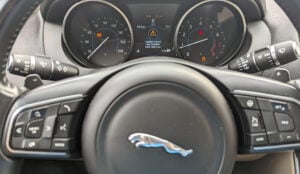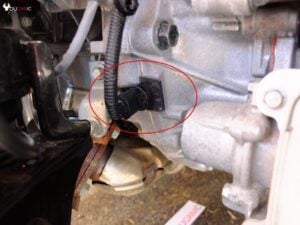Nissan Dashboard Warning Lights Explained
Is there a warning light displaying on your Nissan dashboard? Read the list below to learn the warning light’s meaning and possible solutions to fix the problem.
This guide shows the warning lights on the Nissan dashboard.
|
If the battery warning light comes on while the engine is running, it may indicate the charging system is not functioning properly. Turn off the engine and check that the generator (alternator) belt is working. Do not continue driving if the belt is loose, broken, or missing. Take the vehicle to a mechanic and have the charging system tested. Common causes of the charging system light on a Nissan vehicle:
|
|
|
If the brake light is on, the system may need serviced. We do not recommend driving the vehicle with the brake light on. Use your best judgment to determine if the vehicle is safe to drive. If needing repairs, have the vehicle towed to the shop; driving in this condition could be dangerous. Common causes of the brake indicator light on a Nissan vehicle:
|
|
|
This light warns of low engine oil pressure. It indicates insufficient oil pressure through the oil passages and engine’s main bearings. It is not an indication of a low oil level. Do not drive with this light on; immediately pull over and turn off the engine. Tow your vehicle to a trained mechanic or Nissan dealer. Running the engine with this indicator could cause almost immediate and serious harm to the engine. |
|
|
Engine overheating warning light is an indicator of the vehicle coolant temperature overheating. Check the temperature gauge to see if the vehicle is running hot. Pull the vehicle over and refer to the owner’s manual or a guide on safely checking the vehicle’s coolant level once the engine cools down. Take the vehicle to a mechanic to find the coolant leak or other potential overheating problems. Common causes of the engine temperature indicator light on a Nissan vehicle:
|
|
|
This is a reminder to fasten the front driver or passenger’s seatbelt. An audible chime can usually be heard indicating this. |
|
|
Airbag When the vehicle is first turned on, it is normal for this warning light to illuminate for approximately seven seconds. If the light stays on after this time, the vehicle’s safety restraint system needs to be serviced by a mechanic. It is not recommended to service this yourself as airbags can involuntarily deploy/discharge, causing injury or even death. If you decide to troubleshoot the airbag system, use an Airbag OBD-II Scanner to read the codes. It is important to have serviced, so all airbags function properly in case of an accident. |
|
|
This light should blink every three seconds when the vehicle is either OFF, LOCK, or in the AUTO ACC position, indicating it is functioning normally. |
|
|
When turning the vehicle ignition to the ON position, this indicator will illuminate; after starting the engine, the indicator light will go off. If it stays on, the power steering system must be checked and serviced. Driving with the power steering system not functioning will require greater steering effort; it is best to have the vehicle towed to a shop.
|
|
|
The door-ajar indicator stays illuminated when any of the doors or trunks are not closed properly. If this indicator does not go off even after closing the door properly, it may be caused by worn-out latches in the door or a faulty door-ajar sensor. Common causes of the door ajar indicator light on a Nissan vehicle:
|
|
|
When the ignition is ON, or the vehicle is running, the master warning light illuminating could mean a variety of different warnings. Check the vehicle’s information display for any messages and if any other warning lights are on the dash. Common causes of the master warning light on a Nissan vehicle:
|
|
|
This light indicates the parking brake is on. It can illuminate either red or yellow. If the parking brake is off, this light indicates the system needs to be serviced. Common causes of the electronic park brake indicator light on a Nissan vehicle:
|
|
|
This light indicates the automatic brake hold system is working properly when certain conditions, such as stop-and-go traffic, are met. When it is green, the brake hold is applied. When it is white, the system is on standby. |
|
|
The hood ajar indicator can be an indication that the hood is left open. If the hood is not shut properly, it is possible it can fly up at highway speeds, causing a wreck. Make sure the hood latch is functioning and locking properly. Common causes of the hood ajar indicator light on a Nissan vehicle:
|
|
|
This is an indicator that the intelligent key is faulty or not detected. If the vehicle is running, it is possible to drive to a mechanic/dealer as long as the vehicle is not turned off to have it serviced. Common causes of the keyless access start fault indicator light on a Nissan vehicle:
|
|
|
This indicator light means the intelligent key battery is low and needs to be changed. Refer to the owner’s manual for the type of battery and follow this guide to learn how to change it. |
|
|
This indicator means the brake pedal must be pushed to start the vehicle. Make sure the vehicle is in the park position. If the pedal is stiff from pumping it up, it may not engage the brake switch for this indicator to go off. Push the brake pedal harder or wait for the pressure to dissipate before trying to push the pedal. Common causes of the engine start operation indicator light on a Nissan vehicle:
|
|
|
The dreaded check engine light. This indicator light is a sign of a greater problem with the vehicle. It will only turn on when a vehicle has recognized a significant enough problem that has occurred that needs to be serviced. A code will be stored within the vehicle’s computer to give more detail on the problem. Have a mechanic do a diagnostic or follow this guide to scan the vehicle’s computer for trouble codes to see why the check engine light has turned on. If the light is steady, driving for the time being is normally okay. Do NOT drive the vehicle if the check engine malfunction indicator light (MIL) blinks. This is usually a sign of misfire and, oftentimes, catalytic converter failure, which can lead to massive engine failure if driven. |
|
|
This indicator will blink when operating the Vehicle Dynamic Control (VDC) system. This is normal and indicates the vehicle’s limiting wheel spin to control the traction. This is normal and may be felt or heard while driving the vehicle. Always use caution when driving on slippery surfaces like rain, snow, or ice. If the slip indicator or traction control stays on, this system has a malfunction. The most common problems are faulty ABS wheel speed or steering angle sensors that may need to be reset. To troubleshoot this problem, read fault codes from the ABS module using an ABS Scanner. |
|
|
This indicator occurs when the Vehicle Dynamic Control (VDC) is off. It is either off due to malfunction or was manually turned off. It is always recommended to have VDC on to keep the vehicle from slipping and losing control in hazardous situations. It can usually be turned on and off within the information display. If the light stays on constantly and traction control can not be turned on, the system has been turned off due to a problem with this system or ABS. |
|
|
If the ABS warning light illuminates while the engine is running or driving, it usually indicates the system is malfunctioning. If it is not working properly, the brake system operates normally without using ABS. Common ABS faults on a Nissan vehicle:
|
|
|
This indicates low tire pressure in one of your vehicle’s tires. Check the vehicle’s information display for which position the tire is in that is low. Fill the tire to correct air pressure and drive a few miles, and the light will turn off. If the light stays on, it may be caused by a faulty TPMS sensor in one of the tires. Take to a mechanic for a diagnostic on which sensor is faulty. Common TPMS faults on a Nissan vehicle:
|
|
|
The automatic transmission check indicator light is a sign of malfunctioning automatic transmission. The problem could lie within the transmission or the many sensors it uses to function. It is best to take it to a mechanic or dealer for a diagnostic, and the diagnostic trouble codes (DTCs) for the automatic transmission pulled and the vehicle serviced. In most cases, if this light comes on, the vehicle will put itself into limp mode, and the driver will not be able to go above speed of 45 mph. It is recommended in this case to have the vehicle towed to a shop. Common AT Check faults on a Nissan vehicle:
|
|
|
This light means the vehicle’s four-wheel-drive shifter is in neutral. The shifter needs to be put in 4 Low or 4 High to engage the drive gear. This light will also illuminate when there is a malfunction in the park mechanism of the transmission. Have it serviced by a mechanic or the dealer if this is the case |
|
|
This warning light is an indicator the automatic transmission is running hot. Pull over immediately and turn off the vehicle. Any overheating of the automatic transmission risks burning the transmission fluid and completely ruining it. Have the vehicle towed to be serviced at a mechanic/Nissan dealer. |
|
|
The CVT warning illuminates when there is a problem with the CVT system. Have the system checked if this warning comes on. Avoid driving with this light on as it could cause more damage. Take it to a mechanic/ Nissan dealer immediately. They will perform diagnostics and read the diagnostic trouble codes (DTCs) stored within the vehicle’s computer. |
|
|
This indicator is a warning to have the transmission of the vehicle serviced. Stop driving the vehicle immediately and have it diagnosed and serviced by a mechanic/ Nissan dealer. |
|
|
This light is an indicator that the steering lock is functioning properly. It should only be when the key is in the off position, and the lock is engaged. |
|
|
This light shows when the blind-spot warning system is on, and other vehicles are detected within the blind spot of the vehicle. This indicator is usually shown on the driver and passenger side mirrors. The BSW can be turned off with the vehicle’s information display. |
|
|
This light comes on when the Lane Departure Warning (LDW) system is engaged. The conditions met for it to engage require the vehicle to drift over the solid white line of the road. |
|
|
This indicator shows when the Intelligent Lane Intervention (I-Li) is engaged. It will engage when the vehicle returns to the road after the system detects it has departed from the driving lane to prevent it from going off the road. |
|
|
This warning light indicates the automatic emergency braking system (AEB) has been engaged. The system has detected a possible collision from sensing a vehicle in front that is approaching too quickly. The automatic emergency braking system will automatically take over, decelerate, and brake the vehicle to give the driver time to react and prevent a collision. |
|
|
This warning light indicates a vehicle approaching too quickly in the direction of travel. It alerts the driver to slow down and not get too close to the vehicles ahead. |
|
|
This indicator means a vehicle is too close within a certain distance. It alerts the driver to increase the following distance to prevent an accident if they need to brake suddenly. |
|
|
This indicator will appear when lane departure is detected and the steering assist is engaged. It engages when the vehicle departs a lane and needs to correct itself. This can be turned off and will not engage even when lane departure is detected. |
|
|
The Rear Automatic Braking System (RAB) indicator will engage if the vehicle is in reverse with a speed less than nine miles per hour and detects a collision from the rear. It uses the Rear Sonar System (RSS) with sensors in the rear bumper to sense any objects or vehicles behind. It will automatically brake the vehicle when it engages, preventing any collision. |
|
|
This indicator light means the rear automatic braking system and the rear sonar system are turned off. The vehicle will no longer be able to automatically detect a potential collision and prevent it from occurring. |
|
|
This light means the vehicle is close to having an empty fuel tank. Some vehicles will display the approximate amount of miles the vehicle can still be driven before running out of fuel. It is always wise to fill up on gas without running it too low, as this causes the fuel pump to work even harder when it’s low and can lead to premature failure. |
|
|
This light means that the fluid in the windshield washer reservoir is low. Refer to the owner’s manual for the location of the reservoir. Alternatively, look under the hood for a blue cap with the same symbol. Check its level and fill it appropriately. |
|
|
This indicates that the vehicle is in sport mode. This will enhance the vehicle’s throttle response, and it includes higher shift points for bigger revs for a more sporty feel. |
|
|
This indicator only shows when the soft top is functioning (being opened or closed). It does not stay on if the soft top is in its fully opened or closed position. If it is stuck and not operating properly, this light will stay on. |
|
|
An indicator to show that the outside ambient temperatures are below 37 degrees Fahrenheit. It can be turned off in the vehicle’s display options. Refer to the owner’s manual on how to do so. |
|
|
The all-wheel-drive trouble indicator is illuminated when the vehicle’s AWD system needs to be serviced. The vehicle will only function in front-wheel drive. This indicator also means a diagnostic trouble code is stored in the vehicle’s body control module. Only a mechanic/dealer with the right equipment can diagnose it. |
|
|
The diff lock indicator is usually only available on four-wheel-drive vehicles. This means the diff is locked so that the axle will not spin the wheels independently. This maximizes traction for towing, pulling, or getting unstuck from the mud. |
|
|
The 4LO indicator means the vehicle is engaged in four-wheel-drive low gear—ideal for the most torque and traction when pulling really heavy loads or getting unstuck. |
|
|
The 4WD (four-wheel-drive) indicator light means there is a problem within the transfer case of the 4WD system. Diagnostic Trouble Codes will be stored on the vehicle’s computer. However, it will likely take a special scan tool from a mechanic/dealer to retrieve them. It is ideal to have a transmission shop diagnose this problem. |
|
|
The diesel particulate filter indicator comes on when there is a build-up of excessive soot in the particulate filter. This condition needs to be serviced; neglecting to do so could cause it to build up even more when the vehicle doesn’t run or goes into limp mode. The soot will either have to be cleared or the exhaust system replaced. |
|
|
The water in fuel indicator detects any water within the diesel fuel tank by the fuel filter. This needs to be serviced. Excess water can be drained, the fuel filter replaced, or the entire system drained and replaced. |
|
|
The hill descent control indicator lamp turns on when the system turns on. It engages the brakes and controls vehicle speed on declines that are too steep for the vehicle to speed down. |
|
|
The check suspension indicator means there is a fault within the suspension system. The dealer or a mechanic should service it to fix the problem. |
|
|
This indicates that the vehicle is in sport mode. This will enhance the vehicle’s throttle response, and it includes higher shift points for bigger revs for a more sporty feel. |
|
|
The snow mode indicator means the vehicle is in snow mode. It controls the vehicle’s throttle response to be less aggressive, and the RPMs and shifts point to be lower to give maximum traction in slippery conditions. |
|
|
The tow mode indicator means the vehicle will only go in low gear to give maximum torque and pulling power. |
|
|
The overdrive-off indicator means that the vehicle’s automatic transmission will not engage in overdrive gears. This can be engaged and disengaged by the driver. However, if it can not be returned to on, it indicates a greater problem with the automatic transmission. |
|
|
The EV mode means the hybrid vehicle runs on battery power, and the gas-powered engine is turned off. This indicator means the hybrid vehicle is working properly. |
|
|
The ready indicator light on a hybrid vehicle means that the electric systems checks have passed, and the vehicle functions normally. It is ready for use, aka driving. |
|
|
The EV operation indicator means the hybrid vehicle is using battery power to function. When this light goes off, it is likely the electric motor needs to kick on to provide enough acceleration when pressing on the throttle. |
|
|
The power limitation indicator is a sign that the hybrid vehicle is running out of power. It results in lower vehicle speed. Safely pull over to get towed to recharge the battery. |
|
|
The charge indicator means the hybrid vehicle’s main battery is being charged. |
|
|
The EV fault indicator is the hybrid vehicle’s equivalent of a check engine light. Take the vehicle to get serviced. Do NOT try to service a hybrid vehicle unless you are an expert. Accidents can lead to high voltage shock causing death. Take it to a trained professional. |
|
|
The remote charge timer indicator shows that a time has been set for a hybrid vehicle to be charged. This time can be set with the owner’s preference in mind. While it’s plugged in and this timer is set, the vehicle will charge at the set time. |
|
|
The cruise control indicator means that the cruise control is turned on and the system is functioning. The speed at which the cruise control is active can now be set. |
|
|
The intelligent cruise control indicator shows that the intelligent cruise control (ICC) is active. This enhanced version of cruise control will use the car’s forward-looking radar sensors to prevent any collision with vehicles detected ahead. |
|
|
The headlamp indicator means the normal headlamps are active. This indicator will go off when the vehicle’s headlights are turned off. |
|
|
The automatic high beam indicator stays on when the high beam headlights are set to turn on automatically. This can be turned off, and the indicator will go off when it is not active. |
|
|
The park lamps indicator shows that the parking lamps are running. |
|
|
The fog lamp indicator stays on only when the fog lamps are activated. |
|
|
The turn signal indicator turns on and flashes when the turn signal switch indicates the driver turning left or right. |
|
|
The high beam indicator turns on when the high beam headlights are activated. Pull the turn signal stalk back to switch between high and low beams. |
We hope you find the Nissan Dashboard Warning Lights Explained guide helpful. Check these troubleshooting and repair guides for more help on your Nissan.


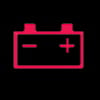 Charging System
Charging System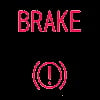 Brake Trouble
Brake Trouble  Low Oil Pressure
Low Oil Pressure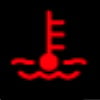 Engine Temperature Indicator
Engine Temperature Indicator Seat Belt Reminder
Seat Belt Reminder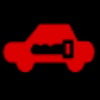 Security Indicator
Security Indicator Electronic Power Steering Trouble Indicator
Electronic Power Steering Trouble Indicator Door Ajar
Door Ajar Master Warning Light
Master Warning Light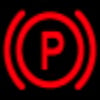 Electric Park brake Indicator
Electric Park brake Indicator Brake Hold Indicator
Brake Hold Indicator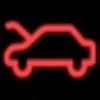 Hood Ajar Indicator
Hood Ajar Indicator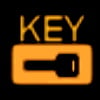 Keyless Access / Start Fault Indicator
Keyless Access / Start Fault Indicator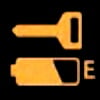 Low Key Battery Indicator
Low Key Battery Indicator Engine Start Operation Indicator
Engine Start Operation Indicator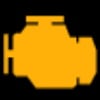 Check Engine Light
Check Engine Light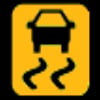 Slip Indicator
Slip Indicator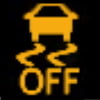 Vehicle Dynamic Control OFF Indicator
Vehicle Dynamic Control OFF Indicator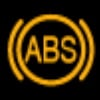 Anti-lock brake System Fault Indicator (ABS)
Anti-lock brake System Fault Indicator (ABS)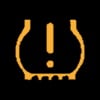 Tire Pressure Monitor Indicator
Tire Pressure Monitor Indicator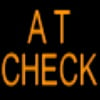 Check the Automatic Transmission Indicator
Check the Automatic Transmission Indicator Automatic Transmission Park Indicator
Automatic Transmission Park Indicator Transmission Oil Temperature Indicator
Transmission Oil Temperature Indicator Continuously Variable Transmission Indicator
Continuously Variable Transmission Indicator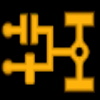 Transmission Warning Indicator
Transmission Warning Indicator Steering Lock Fault Indicator
Steering Lock Fault Indicator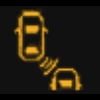 Blind Spot Information Warning Indicator
Blind Spot Information Warning Indicator Lane Departure Alert Indicator
Lane Departure Alert Indicator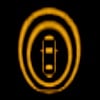 Intelligent Lane Intervention Indicator
Intelligent Lane Intervention Indicator Automatic Emergency Braking Indicators
Automatic Emergency Braking Indicators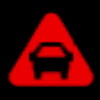 Distance Warning and Vehicle Detection Indicators
Distance Warning and Vehicle Detection Indicators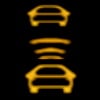 Vehicle Ahead Indicator
Vehicle Ahead Indicator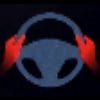 Steering Assist Indicator
Steering Assist Indicator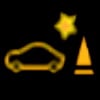 Automatic Brake Indicator
Automatic Brake Indicator Intelligent Clearance Sonar OFF Indicator
Intelligent Clearance Sonar OFF Indicator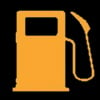 Low Fuel Indicator
Low Fuel Indicator Low Washer Fluid Indicator
Low Washer Fluid Indicator Drive Mode Indicator
Drive Mode Indicator Soft Top Indicator
Soft Top Indicator Low Outside Temperature Indicator
Low Outside Temperature Indicator All Wheel Drive Trouble Indicator
All Wheel Drive Trouble Indicator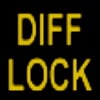 Diff Lock
Diff Lock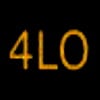 4-Wheel Drive Indicator
4-Wheel Drive Indicator
 Diesel Particulate Filter Indicator
Diesel Particulate Filter Indicator Water In Fuel Indicator
Water In Fuel Indicator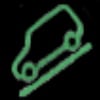 Hill Descent Control Indicator
Hill Descent Control Indicator Check Suspension Indicator
Check Suspension Indicator SPORT Drive Mode Indicators
SPORT Drive Mode Indicators Snow Mode Indicator
Snow Mode Indicator Tow Mode Indicator
Tow Mode Indicator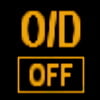 Overdrive OFF Indicator
Overdrive OFF Indicator EV Mode Indicator
EV Mode Indicator 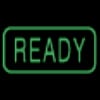 Hybrid Ready Indicator
Hybrid Ready Indicator EV Operation Indicator
EV Operation Indicator Power Limitation Indicator
Power Limitation Indicator Charge Indicator
Charge Indicator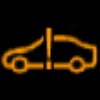 EV Fault Indicator
EV Fault Indicator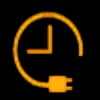 Remote Charge Timer Setting Indicator
Remote Charge Timer Setting Indicator  Cruise Control Indicator
Cruise Control Indicator Intelligent Cruise Control Indicator
Intelligent Cruise Control Indicator  Headlamp Indicator
Headlamp Indicator Automatic High Beam Indicator
Automatic High Beam Indicator Park Lamps ON Indicator
Park Lamps ON Indicator Fog Lamp Indicator
Fog Lamp Indicator Turn Signal Indicator
Turn Signal Indicator  High Beam Indicator
High Beam Indicator
